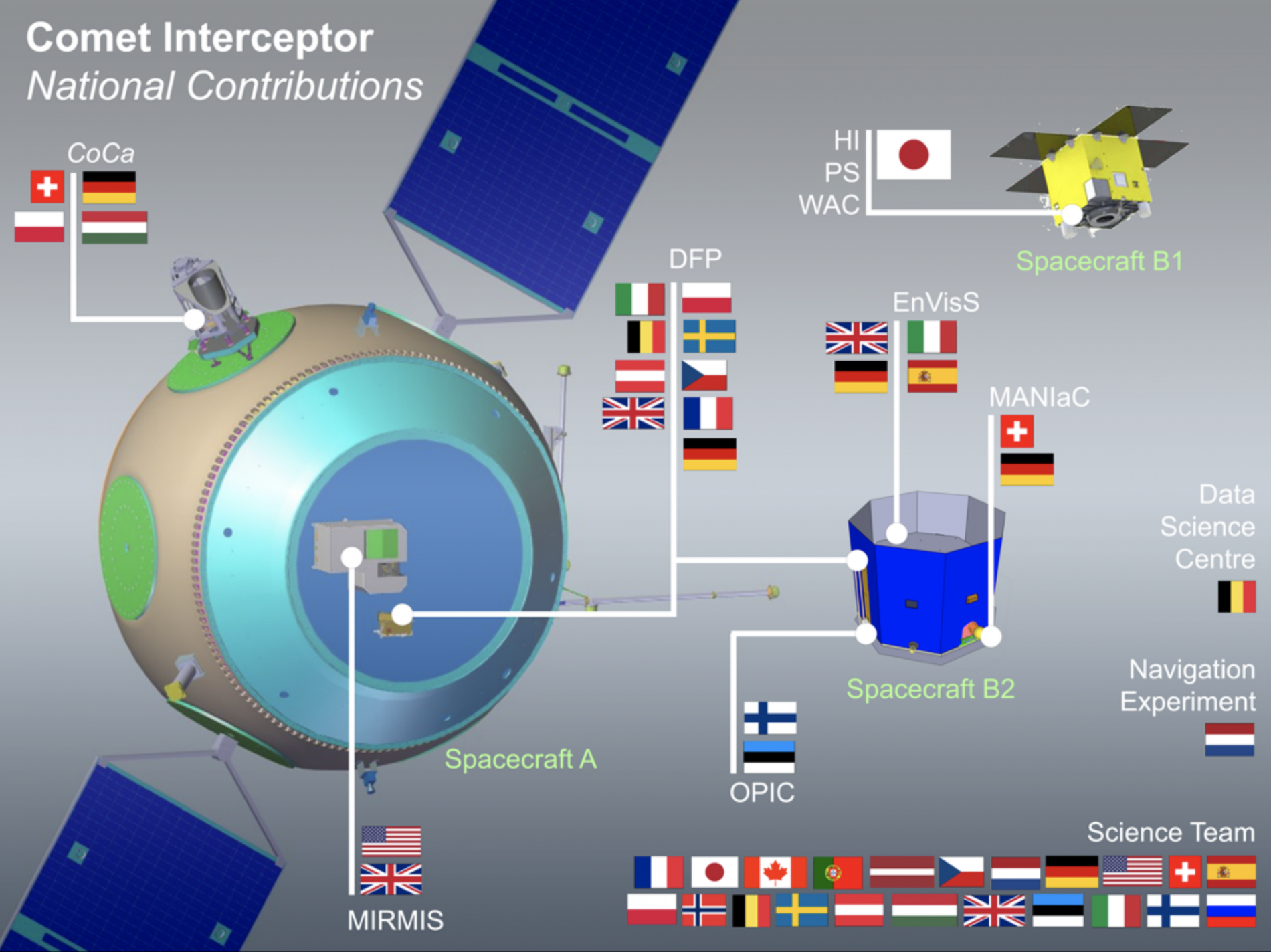The Institute of Astrophysics of Andalusia (IAA-CSIC) participates in Comet Interceptor, ESA's new mission to study a pristine comet
IAA collaborates in the development of four of the nine instruments on board the mission
Last summer the European Space Agency (ESA) selected Comet Interceptor as its first Fast mission, or class F (Fast), with a total development duration from the selection until the launch of about eight years. Comet Interceptor is a technological challenge that seeks to study a new comet, that is, a comet that has not yet been discovered and remains intact since its formation. The Higher Council for Scientific Research (CSIC) participates in the mission through the Institute of Astrophysics of Andalusia (IAA-CSIC), where this week the complete mission team meets.
Class F missions, which have a launch mass of less than a thousand kilos, will share the trip to space with a middle class mission. Comet Interceptor, which will be launched in 2028 and will have Ariel, the exoplanet observatory, as a traveling companion, consists of three probes and will wait for the discovery of a pristine comet at the Lagrangian point L2. From there, the mission will travel to the chosen objective using its own propulsion system.
"By closely studying a new, unchanged comet, Comet Interceptor will allow us to advance in the understanding of the physical and chemical processes that took place in the early stages of the formation of the Solar System", points out Luisa Lara, researcher at the Institute of Astrophysics of Andalusia (IAA-CSIC) who coordinates the Spanish contribution.
One of the great challenges of the mission lies in developing it in a very short period of time compared to the usual deadlines in space missions. In order to achieve this, it is necessary to work in a very coordinated way between the different countries involved, to use instrumentation with a high level of technological availability and to have a wide technical experience in the development of space technology.
Spain, with the participation of the Institute of Astrophysics of Andalusia (IAA-CSIC), will contribute to four of the nine instruments that will travel in the probes: CoCa (Comet Camera), a high-resolution visible and near-infrared camera, the mass spectrometer MANIaC (Mass Analyzer for Neutrals and Ions at Comets), EnVisS (Entire Visible Sky coma mapper) a visible multispectral camera with polarimetric filters and OPIC (Optical Imager for Comets), a camera to map the core and dust jets at different wavelengths. The Institute of Astrophysics of Andalusia (IAA-CSIC) will provide the power supplies for each of the instruments, as well as a scientific data processing unit shared by EnVisS and OPIC.
Work is currently underway on the consistent design of the probes and instrumentation. This week, the mission's scientific and technical team met at the headquarters of the IAA in Granada to define strategies to obtain the best scientific performance from the mission, including the preparation of possible backup targets.

COMET INTERCEPTOR: IN SITU STUDY OF A PRISTINE COMET
So far, all comets studied from space missions are short-term comets, that is, objects that have approached the Sun several times and, therefore, have undergone modifications.
Studying a truly pristine comet is a challenge because these objects can only be detected when they approach the Sun for the first time, which greatly reduces the time to plan and launch a mission. However, technological advances already allow the development of missions of these characteristics: a new generation of powerful reconnaissance telescopes is discovering these comets so far that there is sufficient scope for them to be the objective of a space mission.
The mission will travel to a comet yet to be determined, and will fly over it as it approaches the Sun. Its three spacecraft will make simultaneous observations from multiple points around the comet, creating for the first time a 3D profile of a "dynamically new" object. Comet Interceptor will thus expand the scientific achievements of predecessor missions such as Giotto or Rosetta.
Comet Interceptor comprises three spaceships. The spacecraft will wait at point L2, located 1.5 million kilometers from Earth in the opposite direction of the Sun, for the scientific team to detect a suitable target. When it is defined, it will travel to it and the three modules will separate a few weeks before intercepting the comet. Each module will be equipped with a complementary scientific payload, which will provide different perspectives of the comet's nucleus and its gas, dust and plasma environment.
In the team of the Institute of Astrophysics of Andalusia (IAA-CSIC) involved in the mission participate Luisa M. Lara (principal investigator), Daniel Guirado, Fernando Moreno, Olga Muñoz and Pedro J. Gutiérrez as scientific team and José María Castro, Miguel Herranz, Jaime Jiménez, Ignacio Martínez, Julio Rodrigo and Fernando Álvarez as technical team.
Instituto de Astrofísica de Andalucía (IAA-CSIC)
Unidad de Divulgación y Comunicación
Silbia López de Lacalle - sll[arroba]iaa.es - 958230676
https://www.iaa.csic.es
https://divulgacion.iaa.csic.es

